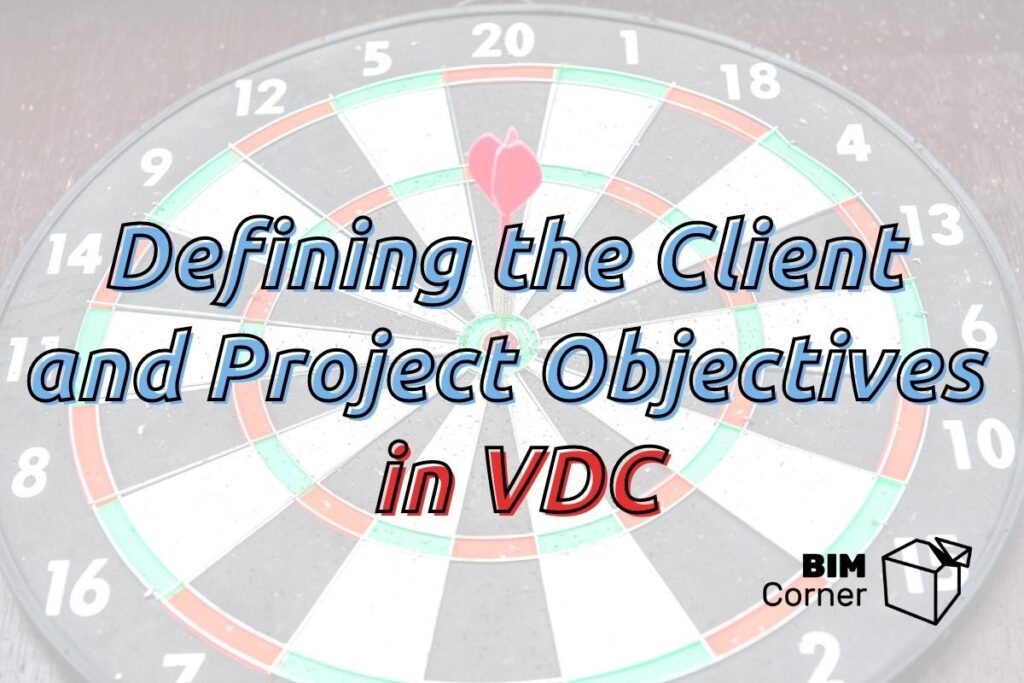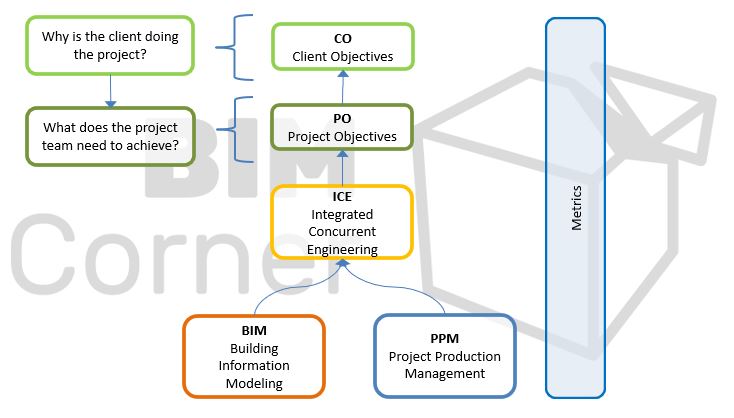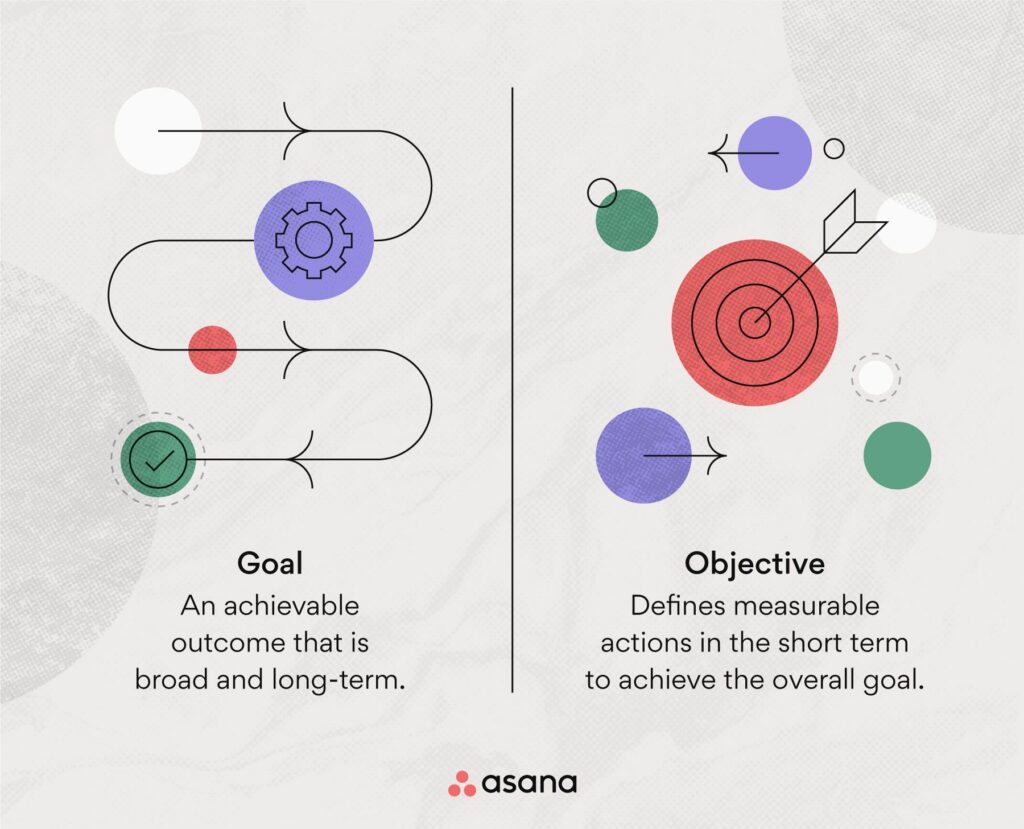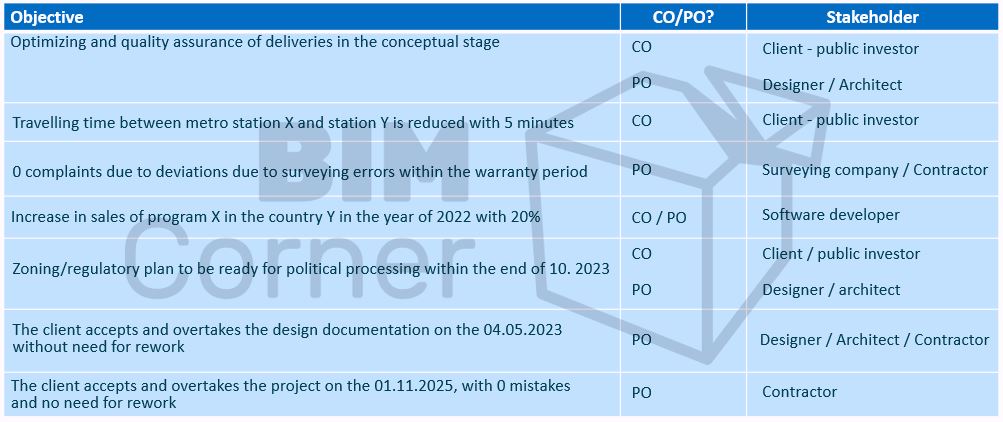What do you do if you want to achieve something that is important for you? Do you do a research about possible ways how to reach your goal, make a plan and prepare a time schedule with milestones and metrics and set a final date for the achievement? Or do you just start doing something that seems right at the moment and hope for the best? When it comes to the construction industry, unfortunately, we often just ‘start doing’, without thinking first about why we do it in the first place. And there are more effective ways how we can achieve our goals, and the VDC framework and its elements, the Client and Project Objectives, can significantly help us in this task.
This post is a continuation of the series EVERYTHING ABOUT VDC.
Table of contents
1. Why do we need to talk about objectives and VDC?
According to many articles on the Internet, poorly defined goals are one of the top challenges in the construction project management. Examples of articles about this issue can be found here and here.
In fact, I have found different names for the same thing, like:
- Lack of well-defined goals
- Poorly defined objectives
- Unclear objectives and goals
Can you relate to those findings? If there is any doubt, why do we need to set well-defined objectives, I would like to ask you what you will say about the following statements:
- ‘We want to finish more projects on budget’
- ‘We wish to use BIM on the high level in our projects’
- ‘We want to have a good cooperation with more customers’
- ‘We plan to achieve an extraordinary quality of the final product’
Can you see a pattern here? One thing is to use words like ‘want’, ‘wish’, ‘plan’, however, what follows is actually a vague wish in all cases. Because what does ‘more projects’, ‘high level’, ‘good cooperation’, or ‘extraordinary quality’ mean’? For different people, organizations, and stakeholders, that would mean different result. For somebody ‘high level of BIM’ could be using models to produce drawings, while for somebody else, using just models, without drawings. Without well-defined objectives, there will always be a room for misunderstanding and in result, they cannot be achieved.
Do you know yourself what does the client want to achieve with the project on which you are working? As we wrote in the previous articles about the VDC (LINK), Client Objectives (CO) and Project Objectives (PO) are on the top in the VDC framework. They help us answer the questions ‘why?’:
- Why is the client doing the project?
- What does the project team need to achieve?
Some reasons for why we need to set well-defined objectives include:
- Common understanding of the objectives
- They give you focus – by choosing and defining several things that you want to achieve, you focus on them and you take control of your work
- Create accountability – by stating your objective, you that you will do something
- Help staying motivated by determining what you want to achieve
- Measure progress – using metrics together with objectives, you can actually see the progress of your way to achieving the goal
- Measure if you have achieved what you planned – by knowing what is it that you aimed for, you can measure the outcomes at the end of the project, or by the important milestones
2. Objectives vs goals
In different languages, there can be different names for objectives, like: goal, objective, purpose, target, or aim. English language is in that case quite rich, while for example in Norwegian it could be just one word: mål, or in Polish: cel. What is important however, is to have a common understanding between a ‘goal’ and an ‘objective’:
- Goal is an achievable outcome that is broad and long term.
- Objective defines measurable actions in the short term to achieve the overall goal.
As an example, a goal could be stated in that manner:
- ‘To run a profitable project and achieve a satisfied client’.
While relevant objectives in this case, connected to de goal, can be:
- Achieve customer satisfaction: > 90% from surveys sent after the project is completed.
Profit after internal expenses: > 10% from the project net value.
3. How to define objectives in VDC?
After definition from this site, objective is ‘an answer to the important question of ‘why?’ which defines purpose, aim, and direction. Objectives should be Specific, Measurable, Achievable, Realistic and Timely (SMART).’
S.M.A.R.T. criteria from Wikipedia describe this acronym as:
- S – Specific – target a specific area for improvement
- M – Measurable – quantify or at least suggest an indicator of progress
- A – Achievable – possible and realistic to achieve (*Ambitious)
- R – Relevant – represents a specific value for those who will implement it (*Realistic)
- T – Time-bound – specify when the result(s) can be achieved
According to The Norwegian Ministry of Finance: Guidance for common requirements for management documents (in Norwegian):
‘Project goals/objectives must be clear and indicative, and emphasis will be placed on whether they are:
- Specific, Measurable, Achievable, Realistic and Timely (S.M.A.R.T. criteria)
- Should be chosen by priorities, especially where they pull in different directions (for example, performance-cost-time)
- Not too many in number (goal confusion)
- Separated from critical success factors and framework conditions (not mixed together)’
Some tips for defining the Project / Client Objectives
- Remember, that the POs and COs are the outcomes – What do you want to achieve by the end of the project (and after?)
- Determine what the project is seeking to accomplish and how its success will be evaluated
- The objectives must be aligned with the needs of all stakeholders, especially the client and end-users
- Define objectives from the beginning of the project, as it helps achieving satisfaction and benefits for all stakeholders, as well as ensures unity and increases cooperation
- The status is being monitored by following up the works and using metrics
- An effective way of discussing and agreeing on objectives is an ICE session
- The objectives should be known to everyone throughout the project – not only in the beginning
- If somebody new comes to the project, it is good to have a proper ‘on-boarding’, including the focus on objectives
How to start with the POs and COs in VDC?
- Create or define client and project’s goals
- Define objective for each goal
- Define metrics to monitor progress towards achieving these objectives
- Agree on controllable factors and production metrics that support the client and project’s goals
Where to find Client Objectives? These can be written directly in the statements from the client about the project, or included in the project documents (special documents, descriptions or reports. In some contracts, you can also have a possibility to define them during clarification meetings with the client.
4. Client and Project objectives and VDC – examples
How to know if an objective is a Client Objective, or Project Objective? The main difference is that Clients Objective should be the same for all stakeholders, while Projects Objectives will differ. There will also be different Project Objectives for different stages of the project – pre-design, design and execution.
In the table below we present some examples of objectives, writing if it could be Client Objective (CO) or Project Objective (PO), and who can be a relevant part to have that objective (in the column Stakeholder). Please note, that for some objectives, it can be both a CO and PO.
Summary – objectives in VDC
In this article, which is a continuation of the series Everything about the VDC, we had a look at the two elements on the top of the VDC framework, the Client and Project Objectives. We answered the question why it is important to use well defined and right objectives together with metrics. We also presented some examples of defining CO and PO in the construction project in practice. As with everything, there are many ways for achieving the goals and objectives. How you do it, depends on the project, your organization, and many different variables. Setting the Client and Project Objectives by using the VDC framework is one of them – and since it is effective, easy to use and practical, we encourage you to start implementing it in your own projects.
This post is a continuation of the series EVERYTHING ABOUT VDC.














